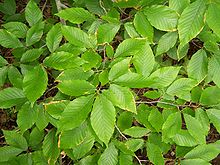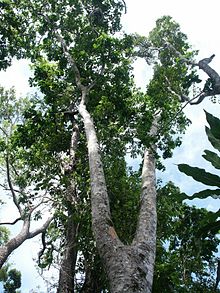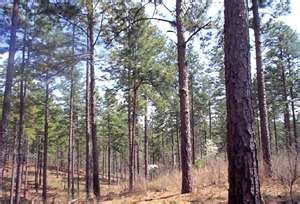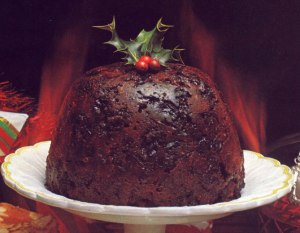Hardwood Species
Hardwood floors have been prized for centuries for their beauty and wear-ability. Traditionally, they represent wealth, taste and style, with each grain pattern and texture bringing a unique masterpiece of natural splendor to the indoors. Each species of hardwood has distinct patterns, colors and properties. A better understanding of hardwood species is a key step in helping you identify the hardwood flooring that is right for you.
Alder–

Alder is a very light brown wood with a yellow or pink tinge with a fine grain and smooth texture. It is one of the fastest growing hardwoods, fully maturing in just 10 – 15 years, making it a sustainable, eco-friendly material. Due to its light color and ability to absorb stain well, alder can be stained to resemble almost any kind of wood, creating an expensive look at a fraction of the cost. Alder measures 590 on the Janka Hardness scale. It is among the softer hardwoods available for flooring. Alder is a popular choice for “shabby chic” décor.
Ash–

White – Ash trees belong to the olive family but do not produce edible fruit. Its color ranges from a lustrous white to a rich cream or very pale tan. A popular choice in flooring, white ash has a distinct grain resembling oak with twisted, interwoven burl patterning. A Janka Hardness scale rating of 1320 gives ash a very good overall strength, excellent shock resistance and good tensile strength for a long-lasting floor that can withstand a lot of traffic.

Beech-

Beech is a species with great color variation from reddish brown heartwood to creamy white sapwood, presented in distinctive streaks and whorls throughout the wood. It has a tight grain and a smooth, uniform texture. A Janka Hardness scale rating of 1300 indicates durability and strength.

Birch-

There are many species of birch, each with its own color variations. Yellow birch is most commonly used for flooring. Yellow birch coloring ranges from a cream or light brown sapwood to a light brown or reddish heartwood, causing noticeable but not dramatic color variation. It is tightly grained with straight, curly or wavy patterns. It can be stained with a convincing mahogany or walnut finish. Birch measures 1260 on the Janka Hardness scale, just slighter softer than red oak which measures 1290.
Bubinga-

Bubinga is a striking wood grown in Africa with a deep, rich reddish color variegated with darker streaks and grain patterns. The grain is fine and well-defined for a beautiful rustic appearance. Bubinga rates 2690 on the Janka Hardness scale, an exceptionally hard and durable material for a floor that will last for generations and stand up to heavy traffic.

Cherry (American)-

American (aka Black) – Cherry, sometimes called fruitwood, is grown in the eastern United States. The wood is a light to medium reddish –brown with a tight, often wavy grain and a satiny, lustrous finish. The Janka Hardness scale rating of American cherry is 950, making this one of the softest hardwoods; however, its dimensional stability is 7.1, above average.
Cherry (Brazilian)-

Brazilian (aka Jatoba) – Brazilian cherry is a medium hued reddish wood with darker streaks and a course grain texture. Rated 2820 on the Janka Hardness scale, Brazilian cherry is an exceptionally hard and durable flooring material that will last for generations and stand up to heavy traffic. Although Jatoba is sometimes referred to as Brazilian Cherry or South American Cherry, it is not a cherry tree but a legume belonging to the Fabaceae family.
Cypress–

Australian – Australian Cypress is similar to pine in appearance; a honey gold wood with light cream sapwood and wavy dark brown streaks and knots offering a lot of patterning and contrast, ideal for creating a rustic look. Rated 1375 on the Janka Hardness scale, it has excellent durability and dimensional stability.
Hickory-

Hickory ranges in color from the medium tan or a light reddish brown of the heartwood to the creamy white of the sapwood. The closed grain is figured with fine straight or wavy lines and the unfinished wood is rough to the touch. Hickory wood is often considered interchangeable with pecan wood (a type of hickory) by suppliers. Hickory has an above-average Janka Hardness scale rating of 1820.

Kempas-

Heartwood ranges in color from orange red to reddish brown without much contrast or grain definition. Sapwood is pale yellow to white with a high luster and an interlocked or spiral grain. It has a coarse texture and a Janka Hardness scale rating of 1710, but a low stability rating.
Mahogany (Asian)-

Asian (aka Keruing) – Keruing is a general name assigned to wood from more than 70 different species of Dipterocarpus native to Southeast Asia whose wood is nearly indistinguishable. Color varies from pinkish-brown to dark brown without significant contrast. The texture is coarse and the grain shallowly interlocked or straight. It rates 1270 on the Janka Hardness scale, making it similar in hardness to red oak.
Mahogany (Santos)-

Santos – Santos Mahogany is a hardwood indigenous to the tropical forests of South America. The color is a rich dark reddish brown with darker striations and fine, oily texture. Grain is straight or wavy and contrast coloring is low but pronounced. It rates high on the Janka Hardness scale at 2200, indicating excellent durability and strength.
Maple–

Hard (aka Sugar) – Hard Maple, also known as sugar maple, is common to North America and wood ranges in color from creamy white to light reddish brown through both heartwood and sapwood. The wood shows medium figuring of the grain with rare occurrences of quilted, fiddleback, or bird’s-eye detailing, which is usually sold at a premium. Hard Maple rates above average on the Janka Hardness scale at 1450.

Merbau-

Merbau is a hardwood indigenous to Indonesia, Malaysia, and Papua New Guinea. The wood is highly prized for its rich, lustrous brown or dark reddish brown color that is sometimes sprinkled with flecks of pale gold. The grain pattern can be interlocked, wavy, or straight. Merbau is a structurally stable wood with a rating of 1925 on the Janka Hardness scale, making it an exceptionally hard and durable surface.
Mesquite-
Mesquite is a deciduous tree found in north Mexico and across the southwest and Midwestern United States. Wood color ranges from light brown to dark reddish brown with ingrown mineral streaks. Color variations are tonally moderate, but visually distinctive. Mesquite is a very durable wood with a rating of 2345 on the Janka Hardness scale.
Oak (Red)-

Red Oak is a general term used for more than 200 subspecies common to North America, differentiated by color variation. There is little difference in color between sapwood and heartwood. The wood is light in color and reddish in tone. The grain is open and coarse with a tight grain pattern. Quarter sawn lumber can have a flake pattern, also known as butterflies of tiger rays. Northern Red Oak scores a 1290 on the Janka hardness scale and is the benchmark average rating. Southern red oak is slightly softer, scoring 1060 on the Janka scale.
Oak (White)-

White oak heartwood is pale brown in color and may have a pinkish or slightly silver/gray cast. Sapwood is light cream to white with low color variation. The grain is open with rays longer than that found in red oak with occasional swirls, burls and tight knots. White oak is slightly softer than the median and rates 1210 on the Janka hardness scale.
Padauk-

Padauk is considered an exotic hardwood indigenous to Central and West Africa. The heartwood is a dark, rich reddish or purplish brown or black with little variation in color. The grain is straight or interlocked and the texture is coarse. Padauk rates 1725 on the Janka hardness scale and is exceptionally strong and stable.
Pecan-

Pecan wood ranges in color from the reddish brown with dark brown streaks of the heartwood to the creamy pinkish white of the sapwood. The grain is open with straight, wavy or irregular lines. Hickory wood is often considered interchangeable with pecan wood (a type of hickory) by suppliers. Pecan has an above-average Janka Hardness scale rating of 1820.

Pine (aka Southern Yellow)-

Southern Yellow Pine is the wood from several evergreen species common to the southern regions of the United States. The heartwood is light yellow to yellowish brown and can have an orange cast. Sapwood is yellowish white to pale tan. The closed grain has prominent and distinctive figuring patterns and knots are common. It is softer than the median on the Janka hardness scale, falling between 690 and 870 depending on species.
Pine (Heart)-

The term heart pine is usually used to describe wood that has been reclaimed and recycled from old buildings. Its color is warm reddish brown with pale yellow sapwood and some black sap staining. Heart pine is a dense wood with a high degree of figuring. The grain pattern is usually either swirled or straight lines close together like pinstripes depending on the method used to saw. Heart pine rates a median value of 1225 on the Janka hardness scale, but dimensional stability can vary with the species, age and prior usage of the wood.

Sapele-

Sapele is an exotic hardwood similar in many ways to mahogany. It is indigenous to Africa. The wood is a dark, rich, reddish brown with a fine, interlocked grain. With an above average Janka rating of 1500 and exceptional dimensional stability, Sapele offers more durability than a true mahogany and compares to oak in strength and wear.
Tea– Brazilian (aka Cumaru)

Indigenous to South America, Brazilian teak is one of the hardest wood species in the world. It is a fairly uniform light to medium brown and may have a yellow cast. The grain is fine and interlocked, and the wood feels waxy or oily to the touch. Brazilian teak rates 3540 on the Janka hardness scale and has above average dimensional stability, making it an extremely durable and long-lasting flooring material.
Teak– True

True teak is native to tropical regions of Southeast Asia and is grown in Central America and parts of South America. Color range is a medium golden brown with streaks of darker brown. The grain may be wavy or straight, and the texture of the wood is coarse and oily with a dull luster. True teak measures 1000 – 1155, relatively low on the Janka hardness scale, making it a softer wood than most hardwoods.
Tigerwood

Tigerwood grows naturally in the in the neotropical forests of Brazil, Bolivia, Peru, Guatemala and Mexico. Color ranges from a pale cream to a rich reddish-orange hue in the dramatic streaking pattern that gives the wood its name. Tigerwood has an irregular grain that may be mottled, wavy or interlocked and a fine texture with a medium to dull luster. Tigerwood measures 1850 on the Janka hardness scale and is a heavy, stable flooring material.
Walnut– American Black

American black walnut is indigenous and common to North America. Wood color ranges from rich dark brown to black with a purple cast. There is a dramatic difference between the heartwood and the white to light tan sapwood. Flooring manufacturers often darken the sapwood by bleeding the heartwood color into the sapwood by steaming the wood. The grain is open and straight, and can have curly or burled figure. American black walnut has a Janka hardness rating of 1010, softer than red oak.
Walnut– Brazilian (aka Ipe)

Brazilian walnut is indigenous to South America. Color is a medium to very dark brownish black with little variation. The grain is fine to medium, straight, wavy or irregular. Wood is heavy, solid and oily, and the Janka scale rating is 3680 with above average stability, making Ipe (pronounced “e-pay”) the hardest and most durable wood available.
Wenge

Wenge is lumber from the Millettialaurentii tree, indigenous to Africa. The color is a rich dark brown with thick striping in almost black. Sapwood is dramatically different from the heartwood in pale yellowish white. The grain is straight and the texture coarse and oily. Wenge rates above average on the Janka hardness scale at 1630 and has excellent dimensional stability.











































